You’ve seen it in the movies, on the TV but it escaped you how on earth was all this possible. Those stairs climbing, running along a rail, the flips and so many acrobatics. You probably think it cool. But a lot of effort goes into achieving that level of athleticism and don’t forget that if you goof it up, a spill will cause you more than some discomfort. So apart from stunts, you can cruise along. It builds up your fitness and is a fun way of getting from one point to another. So for beginners, here’s a lesson on how to ride a skateboard.
How to Ride a Skateboard?
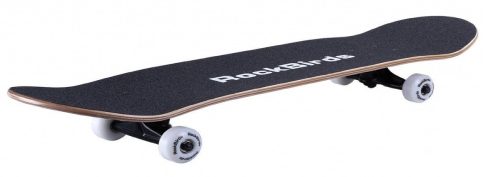
First, you need a skateboard and don’t shop for one at the mall. Do buy your gear at a pro skate shop.
Classic skateboards – These have curved noses and tails and are concaved to perform tricks. Normally their length is around 30” and 8” wide. Invest in these as you can both cruise and perform tricks eventually.
A concrete driveway or a parking lot free of potholes, cracks, and pebbles will do handsomely to practice on. Skateparks are the best, just stay on the sidelines, observe and gather tips. Whether you are riding skateboards or longboards, learning from a friend is the best option rather than doing it on your own and watching YouTube clips.
Positioning The Foot
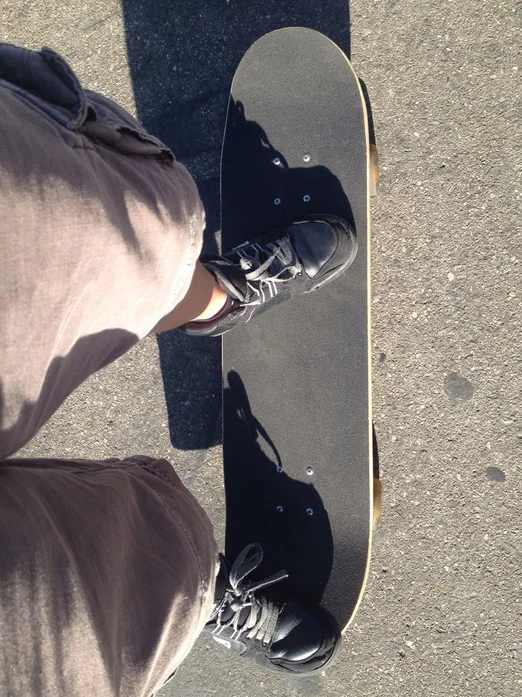
Stand on the board and ask a friend to push you off it. The foot you put out first goes on the board. The logic is simple. It is your dominant foot so you will be a good deal more stable with that foot on the board. The regular foot is the one in front is your left and the foot at the back is your right. The goofy foot is the other way round.
Balance

As with a bicycle, getting started is learning to balance and use body shifts for maneuverability. Also, learning to balance on a skateboard can help you balance yourself on a hoverboard too. Finding your balance will not be such a big deal. Stand on the board with both feet angled slightly, one at each end over the trucks, and waddle penguin like.
The other option is to put your regular foot on the board aligned with the board and kick gently to get the board in motion till you get a little momentum going before getting the other foot on the board. Crouch a little and if you feel wobbly, outstretch your arms.
Pushing
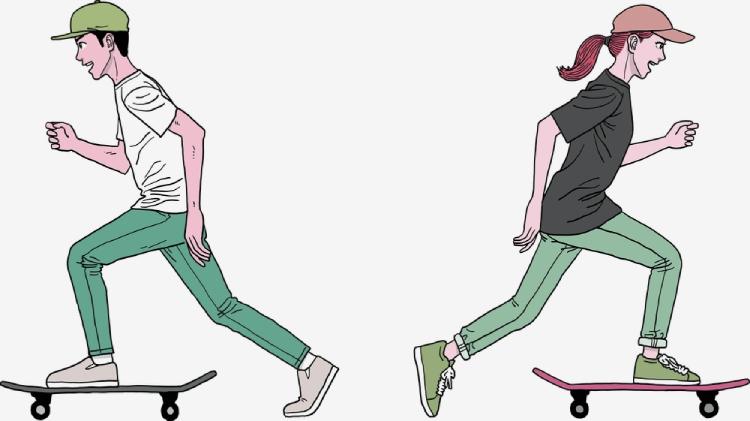
In other words, imparting motive power to get your skateboard rolling. In the beginning, stages, keep your speed low. A common mistake some people make is mongo foot which is using the front foot fo pushing while anchoring the rear foot on the board. This is the wrong technique and will be to your disadvantage later on. So correct it from the start. Getting balance is easier if you have that optimum speed so that balancing becomes easier.
Turning
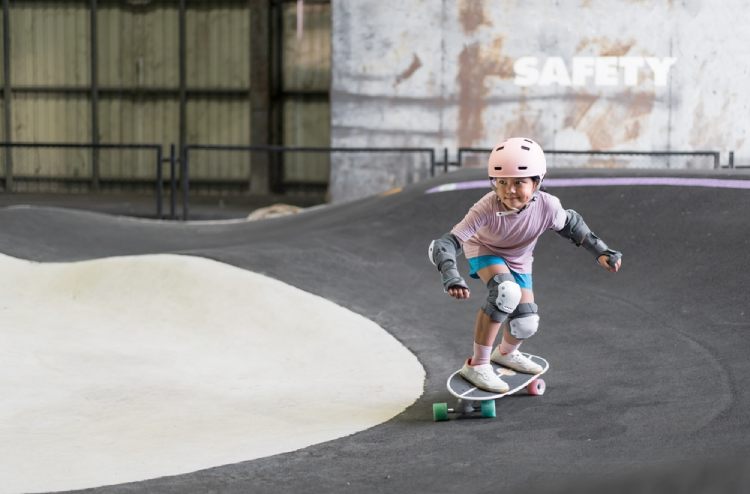
Next to learn is turning. Turning is pretty straightforward. There are two ways to do this; a carving turn and a kick turn. For carving turns, the trucks are intentionally left a little loose. Stand with your shoulders in line with the board, knees flexed to lower the center of gravity. Suppose you want to turn left. Simply leaning to the left, transferring a little weight forward, and turning your ankles back, will make the board also follow left. The important thing is to pivot the deck with your feet so the trucks do the turning. A kick turn involves shifting body weight to the back so that the front wheels are slightly off the ground. A shoulder movement initiates the turn.
Cruising Moves
So now you have the basics.
The first simple cruising move is the Manuel. You get the front wheel off the ground and balance. That’s it.
Then there’s the Slide. It’s putting your back foot on the edge of the board so that the board is sliding
Stopping
Put your foot down to stop. Don’t jam it on the sidewalk, bur drag it, first lightly and then harder. You will lose momentum rapidly. Some but their back foot so as to stand on the tail which scrapes against the ground, stopping. This can damage your boards. A better option is to shift your back foot over the tail and let your heels scrape the ground. Don’t use this method for electric longboards or skateboards.
Riding Switch
Once a certain level of familiarity is built up with skateboarding, try doing the mongo, that switches your feet, back foot front and conversely. It will help you become a real good skater. It comes in useful to do the half-pipe and other tricks. But you should gradually avoid mongo push.
Learning to Fall Properly
Part of skateboarding early on is frequent falls. Wear protective gear and fall correctly. This trick will also help you with inline skates.
Put your arms out keeping them loose. Fracture is a probability with rigid arms.
Roll when you land and don’t just land like a sack of potatoes
It can so happen that you have lost control, then simply bailout. Land on your feet running or rollover into the grass.
Moving Forward
It’s showtime folks! You are ready for some tricks now. Now that you are past the beginner stage, we start with the simpler tricks and slowly build up to advance from beginner. But practice, practice, and more practice.
Learn Tips & Tricks
A trick is a maneuver on your skateboard. Well start with these five small tricks. A small change for advanced skateboards but for someone starting out, they will ground you well.
Trick #1 The Flip
The board is upside down with the grip tape over the shoes. You jump flipping the board over and you land on the board.
Trick #2 A Nose Bleed
Find a straight-edged curb. Head for it, just before making contact, put a little pressure on the tail to get the front wheels off the ground and enough to clear the curb. Once done, put your weight on the front foot, sit there for a second and roll off. By and by, you will be climbing that curb and stay in motion.
Trick #3 Caveman
It’s an old number. You simply drop your skateboard and jump onto it in one fluid motion. With practice, you’ll be on the board before it hits the ground. Keep practicing it until you get super-fast at it.
Trick #4 Riding Off a Curb
This calls for proficiency with your skateboard. The more the speed, the easier it is. As you are a couple of inches off the edge, raise your front wheels slightly and continue till you drop down. You have speed still so just keep riding on. This is an important maneuver to learn as you will need to get off the curb often.
Trick #5 Boneless
Your board is not moving at a high speed but rolling. Taking your front foot off the board, use the arm on the same side to grasp the board. Lift your back foot off, let go your hand and land back with both feet back on the board.
The sport of skateboarding is addictive as it packs thrill of motion and movement seamlessly. It is aesthetic to behold and a wonderful sport to pick up at any age and at any level of fitness. As opposed to longboards, skateboards respond instantly and sharply. The reflex building, stress relief, and motor skill enhancements all make it the captivating sport it is. Now that you know how to ride a skateboard, it’s time for some thrilling moments!

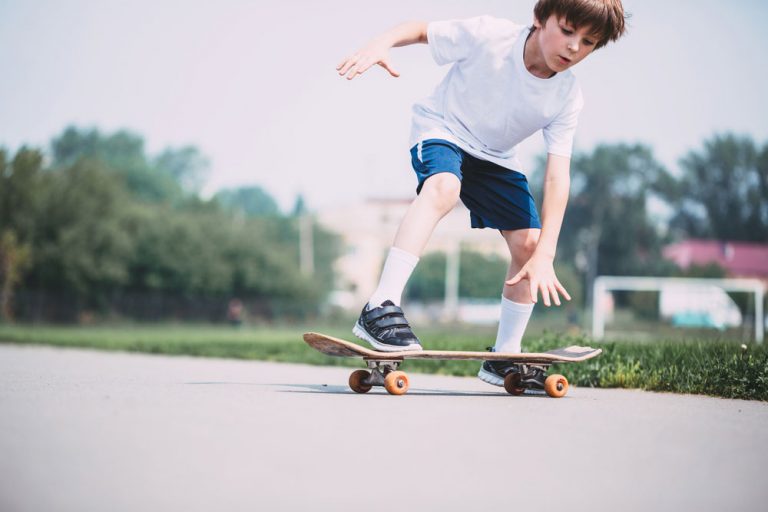
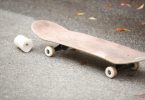
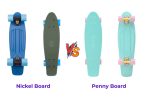
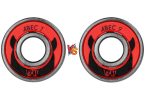
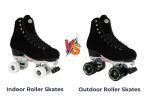
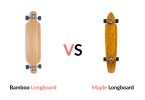
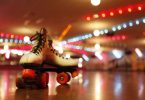

Leave a Comment